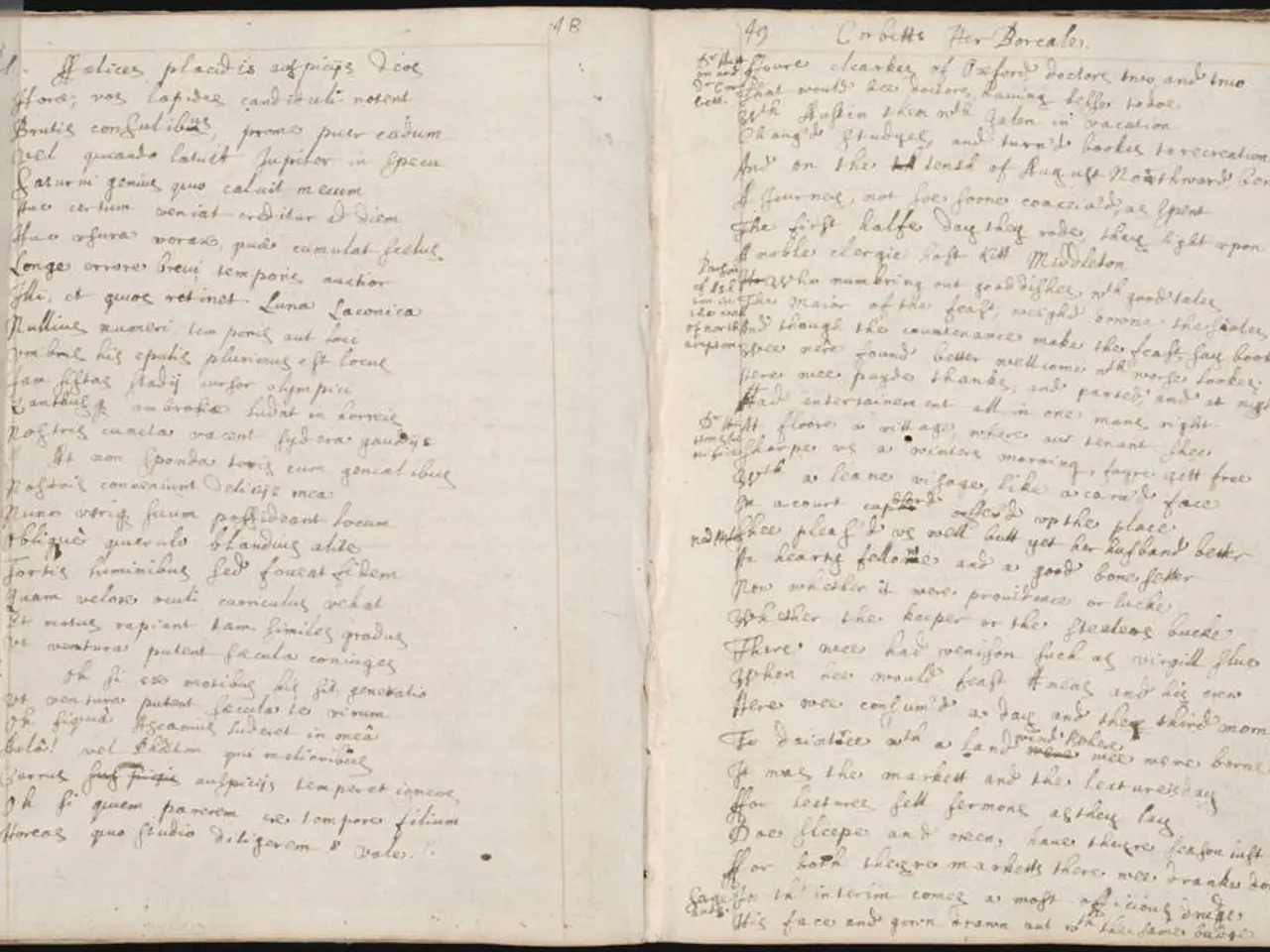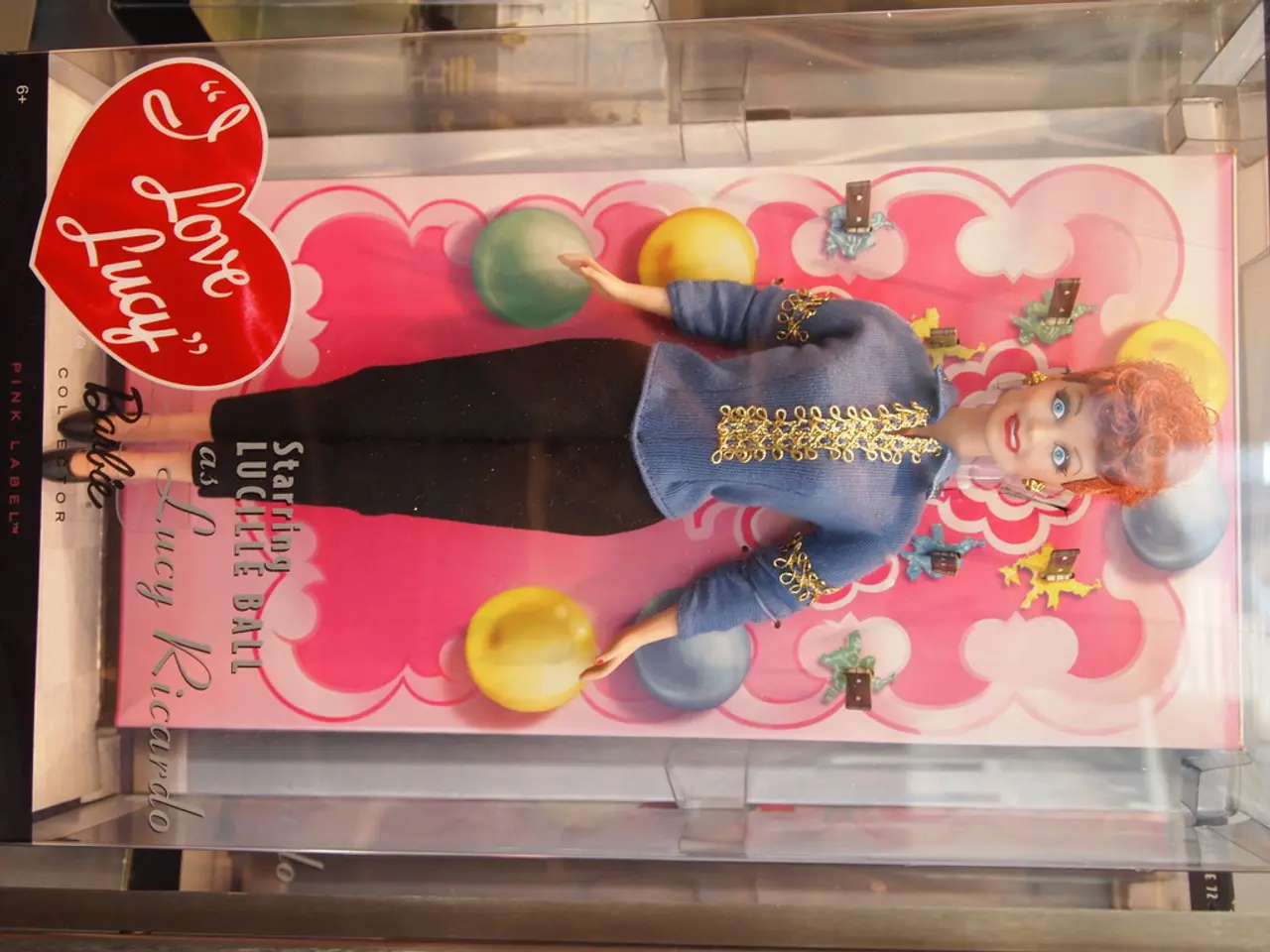Top Recommended Reads for Writers in the Year 2025
In the quest to craft a novel that resonates with readers, Donald Maass's "Writing the Breakout Novel" and its accompanying workbook serve as invaluable resources, brimming with actionable tips. For those eager to delve deeper into the craft of writing fiction, a plethora of books await, each offering unique insights.
One such book is Stephen King's "On Writing: A Memoir of the Craft." A blend of memoir and practical advice, it guides aspiring novelists on writing compelling fiction, earning its reputation as an essential read for aspiring authors.
Sol Stein's "Stein On Writing" focuses on the nuts and bolts of great writing, offering advanced techniques to improve your craft. For a contemporary, no-nonsense approach, Chuck Wendig's "The Kick-Ass Writer: 1001 Ways to Write Great Fiction, Get Published, and Earn Your Audience" is a must-read, brimming with practical tips and humour tailored to fiction writers.
Anne Lamott's "Bird by Bird: Some Instructions on Writing and Life" provides both life advice and writing tips, helping to develop creativity and perseverance in writing. Steven Pressfield's "The War of Art" addresses the psychological resistance writers face, offering strategies to overcome it and produce work consistently.
For those seeking foundational storytelling concepts, the "Story Foundation Trifecta" — an interesting premise, a sympathetic hero, and a clear, compelling main story — ensures engaging fiction. Podcasts like "Fiction Writing Made Easy" offer practical, no-fluff advice on writing, editing, and publishing novels, providing ongoing support and actionable tips.
Courses like The Ninety Day Novel can complement book learning by providing structured, day-by-day guidance for novel-writing. Books such as "Scene & Structure" by Jack M. Bickham, Jessica Brody's "Save the Cat! Writes a Novel," and Stuart Horwitz's "Book Architecture" provide new tools for outlining a novel, especially for teaching purposes.
"Writing Fiction: A Guide to Narrative Craft" teaches things about writing fiction that might not be intuitive, while K.M. Weiland's books about structuring your story are a good place to start for understanding story structure. Randy Ingermanson's "How to Write a Novel Using the Snowflake Method" is recommended for planning a novel, although the author has yet to read it.
"The Artist's Way" by Julia Cameron is a classic book that introduces the concept of morning pages, while June Casagrande's "It Was the best of Sentencs, It Was the Worst of Sentences" helps clean up sentences and highlight what the writer wants to say. John Trudy's "Anatomy of Story" has a non-formulaic approach to structure and is recommended for people who don't like outlining their books.
"Writing the Intimate Character" by Jordan Rosenfeld is recommended for understanding the differences between points of view in fiction, while "The Emotion Thesaurus" by Angela Ackerman and Becca Puglisi is a useful resource for describing characters' emotions. "She Sat He Stood" by Ginger Hanson offers ideas for making writing more dynamic by having characters interact with their environment while they talk.
Matt Bird's "The Secrets of Story" tells how to tell stories that captivate readers and goes through practically every aspect of a book. Sol Stein's "Stein on Writing" gives useful tips on improving novel manuscripts by showing problems and how to fix them. Chris Fox's "Plot Gardening" offers a gentle process for writing a novel outline and teaches about Hero's Journey and Story Circle. "1000 Character Reactions" by Valerie Howard provides descriptive language and accurate choices of words for character expressions.
In the author's journey to improve their writing, they started considering books about writing and intentionally learning about the craft a few years ago. They believe that these books can make someone a better writer. While there is no single book that can teach everything about writing, reading these books has changed the author's life. The author suggests learning from multiple sources to improve writing skills.
Writing a book outline can help in discovering the story and reducing writer's block, but there's no one method to outline a novel. K.M. Weiland's book "Outlining Your Novel" has been a useful resource for planning new stories. Brooks Landon's "Building Great Sentences" helps write more beautifully and shows how to build the right rhythm into sentences. Stephen King's "On Writing" remains a popular resource for writing tips and advice.
The author's blog offers writing tips and inspiration, while their Etsy store, Writer Lifestyle, provides the best author tools. The author believes that these books can make someone a better writer.
- Donald Maass's "Writing the Breakout Novel" and its accompanying workbook are useful resources for beginner writers, offering practical tips and insights into book structure and creative writing.
- Books like Stephen King's "On Writing: A Memoir of the Craft," Sol Stein's "Stein On Writing," and Anne Lamott's "Bird by Bird: Some Instructions on Writing and Life" are essential reads for aspiring authors, providing advisement on novel writing, story structure, and developing creativity.
- For those seeking advanced techniques in creative writing, Chuck Wendig's "The Kick-Ass Writer: 1001 Ways to Write Great Fiction, Get Published, and Earn Your Audience" offers a no-nonsense approach, brimming with practical tips and humor tailored to fiction writers.
- Additionally, podcasts such as "Fiction Writing Made Easy" and courses like The Ninety Day Novel provide practical advice on writing, editing, and publishing novels, supplementing book learning with structured, day-by-day guidance for novel-writing.








